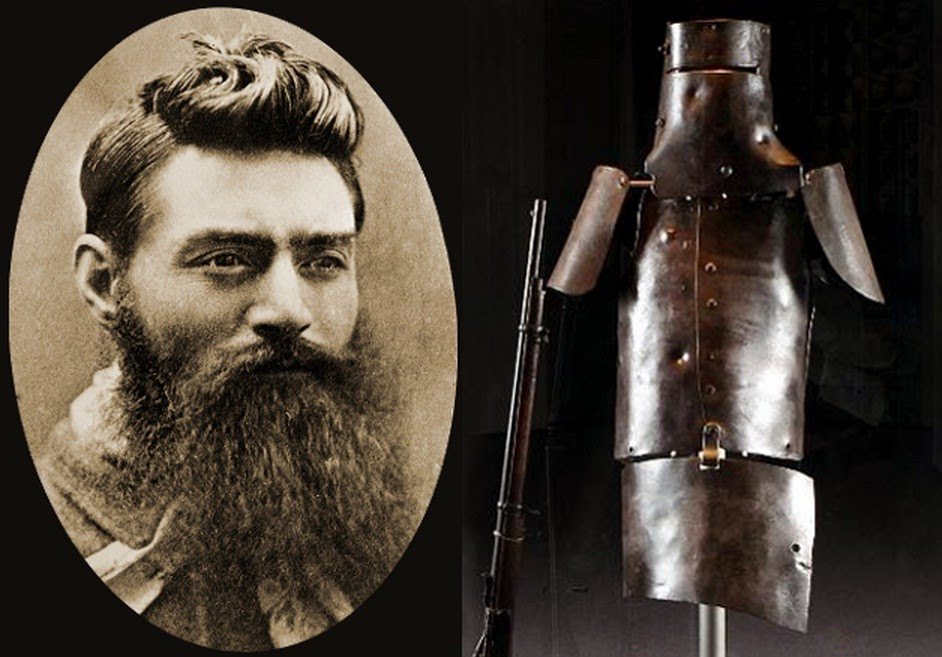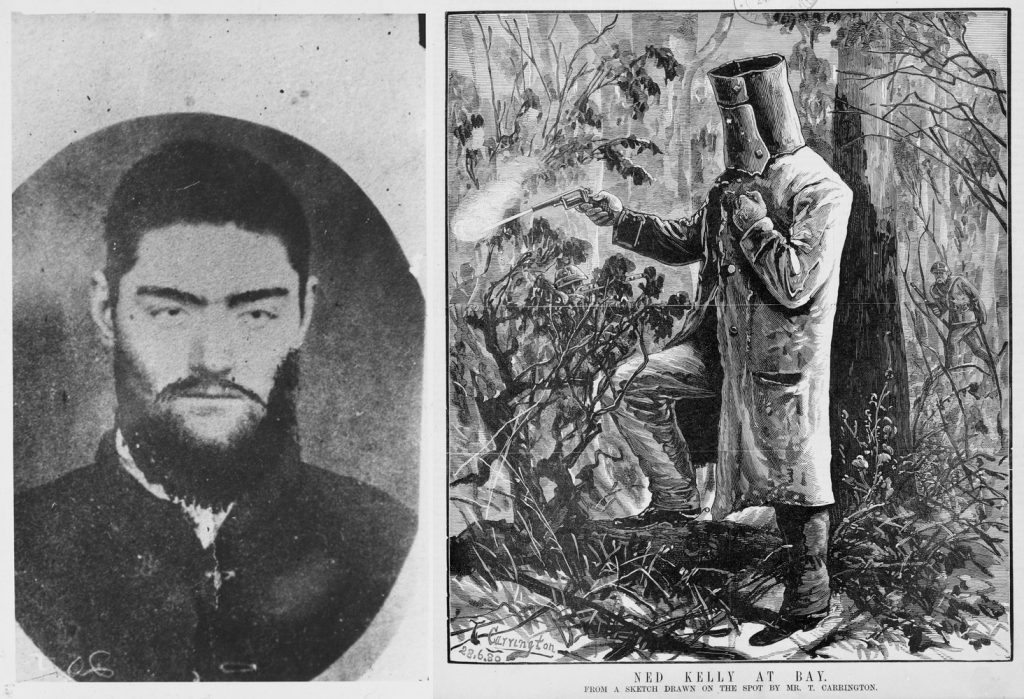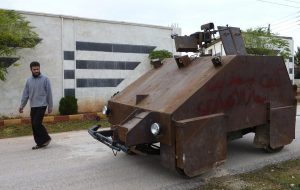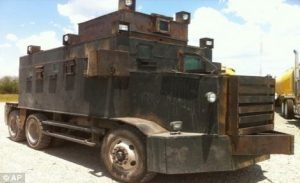In the great spaghetti western A Fistful of Dollars by Sergio Leone and starring Clint Eastwood, our hero known as the Stranger uses steel-armor to good effect.
After getting a good stomping from Ramón’s henchmen, the Stranger convalesces under the care of his rescuer Silvantio. When the Stranger is strong enough to exact his revenge upon the evil-leader Don Miguel and his henchman Ramón, the Stranger plans to do something very unique.
He straps a steel chest-plate beneath his poncho. He walks into the crossroads of the town. The townsfolk scoot out of there quickly. Don Miguel’s men, the Rojos, wait for main henchman Ramon to kill the Stranger. The Stranger taunts the bad guys to “aim for the heart”. Ramón takes his rifle and shoots straight at the Stranger’s heart but he can’t understand why the Stranger will not die. The bullets bounce off the Stranger and he in turn kills all of the men: the Stranger shoots the rifle from Ramón’s hand, kills the Rojos gang, kills Don Miguel, and kills Ramon. In our happy ending the man with no name rides away. Would armor like this actually work in a gun fight? The 1964 movie probably got it’s idea from the strange story of Ned Kelly.
Edward “Ned” Kelly (December 1854– 11 November 1880) was an Australian bushranger. He was a bankrobber who became a champion of the working class, essentially their modern day Robin Hood, and after his death became an Australian legend. Kelly was captured in June 1880 after the famous siege at Glenrowan where he and his bank robbers killed 3 Victoria Police officers. 30,000 people signed a petition demanding clemency for him even though he was a killer. The documentary shown below covers this interesting criminal and folk hero. Though he and his gang of men built armor that could repel bullets, the armor did not protect their arms and legs. Ned Kelly‘s attempt to derail and ambush a police train clearly failed. His entire gang died in the shootout yet Kelly lived only to be executed later. This is a fascinating history and at the same time impressive for what they tried to do by using their homemade armor. In this interesting account we can read that:
The gang members were equipped with armour that repelled bullets (but left the legs unprotected). They made these with the intention of further robbing banks, as the gang were short of money. The police had been informed by their spies about the armour that the gang had tested it with bullets at ten paces, but dismissed these stories (the armour had been made in the district by a man well known to the police, although the proof was insufficient for a conviction). Each man’s armour weighed about 44 kilograms (97 lb). All four had helmets. Byrne’s was said to be the best, with the brow reaching down to the nose piece, almost forming two eye slits. All wore grey cotton coats reaching past the knees over the armour.
https://www.youtube.com/watch?v=5LriJHmSLZ4
On the internet there are many sites devoted to making homemade armor. The fellows at a group called Demolition Ranch created body armor from T-Shirts, paper, and duct tape. How does it hold up?
Let’s give you the answer. The paper clearly does the best while the duct tape and the t-shirt don’t fare as well. I don’t want to get in to a long explanation of the benefits and drawbacks of using phone books, t-shirts and steel plate for armor. Myth Busters did a very good explanation of this on their television show. And the results from the video I filmed and posted are evident to anyone who knows a bit about firearms. In the movie True Believer, starring the actor James Woods, a character in the movie has to do gladiator fights in prison. The inmates strap phone books to their chests and arms and hold the paper in place with duct tape. They go to battle with shivs. A good shiv can be made out of broken glass and a lot of tape wrapped around the end to make a handle. Is it practical to use these things for armor? Practical means likely to succeed or reasonable to do so. When are you going to have a chance to use this stuff other than in an extreme situation? The video I posted below was taken by me while attending the Mobile Force Protection Course at Gryphon Group. You can check out the results.
The express purpose of my article and for posting these videos, like the one from Gryphon Group, is to show those who have little experience with armor and firearms their practical applications. Gryphon Group does this partly as carnival showmanship; it’s the ‘ahhh’ cool-factor part of taking a course, while the most important part is to teach students how to be expansive thinkers. You want to be able to look at all alternatives in order to increase your chances of surviving a bad situation. All of the armor shown in these videos can stop a round from penetrating it by absorbing and dispersing the energy. But keep in mind that the user can still receive great bodily injury due to broken bones and bruised organs from the force of the impact. Myth Busters created a very entertaining video and I posted it below. Once again, is it practical to use phone books or steel? A million questions can be asked:
- How far away is the shooter?
- How many phone books do you have?
- What other types of material are you using?
- Where in the vehicle are the phone books placed?
- Did you secure the phone books down properly?
- What type of weapon is the shooter using on you?
If you change the circumstances you change the outcome. After a few bursts of rounds upon a phone book, it is going to turn into confetti. Steel plate will have interesting results too. The Kurdish YPG have put armor to great use with their vehicles with their armor upgrades. So, what if you want to use phone book armor, steel plates or sandbags in your vehicle for armor?
Place your armor in the trunk of your car, along the car doors, dashboard or floor of the vehicle. As jury-rigged armor it will be bullet resistant to small arms but for larger calibers it will not. Of course the shooters in these videos are shooting through a steel trunk and then the phone books, but this lesson illustrates a last-minute approach to surviving by using one thing, innovation; that’s what people do when they lack resources.
These videos should help expand your mind a bit on some things that can be done. Use the same idea or improve upon it. Best of luck.






